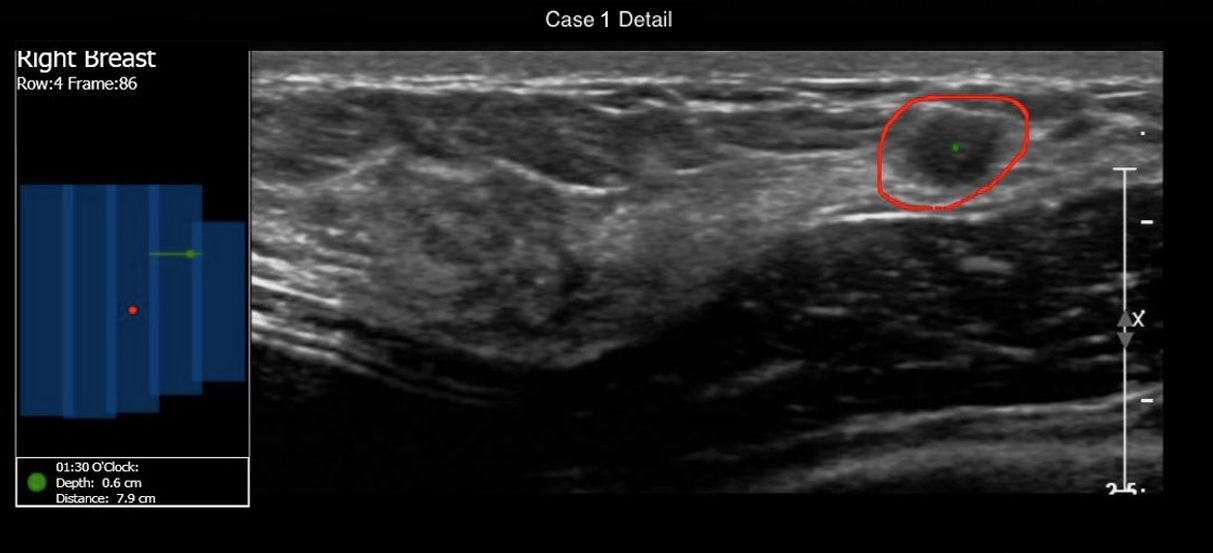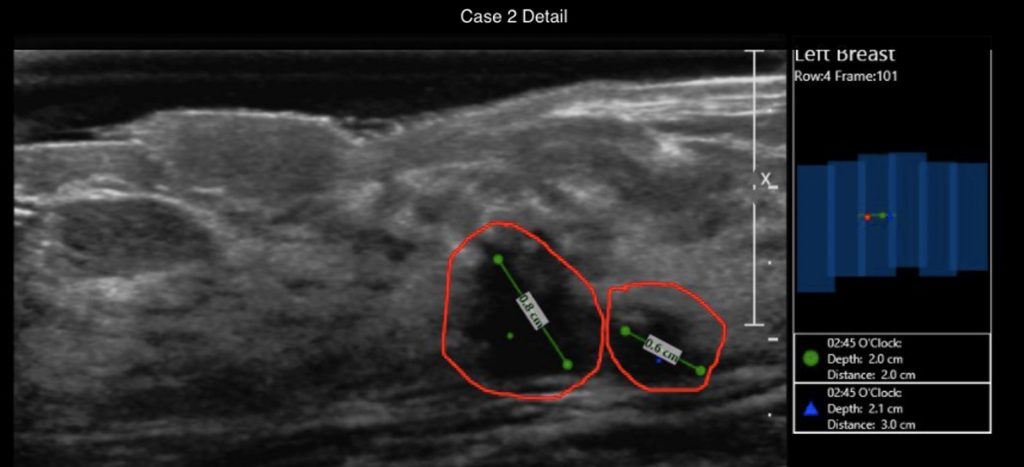


Despite an annual expenditure of $7.8 billion on screening mammograms in the United States, more than 40,000 women die from breast cancer each year. Invasive breast cancer is the leading cause of death in this country for women between the ages of 35-54. According to the National Cancer Institute, in 2010, the cost of treating breast cancer was approximately $16.5 billion in the United States, higher than any other type of cancer.
This is expected to exceed $20.5 billion by 2020. Individual costs vary, depending on the stage of malignancy and treatment options selected.
More than 10% of diagnosed cases and more than 10% of deaths from breast cancer occur in patients younger than 45 years of age. In the last 10 years, an increase in diagnosed cases of 2%, 5% and 8.5% has been detected in the age groups 30-40 years, 35-39 years and 40-44 years respectively.

The SonoCiné AWBUS robot automates the scan acquisition process by compensating for the sonographer’s probe manipulation and reducing human error.
The robot helps maintain overlapping scan rows and provides automated nipple location, with an intuitive, tactile workflow integrated into RIS and PACS.
SonoCiné AWBUS captures one slice every 400µ and therefore provides enough images to identify masses as small as 3-5 mm in diameter. Smooth video playback and visual navigation allow clinicians a more complete view of a potential finding.


Advantages of Sonociné vs. ABUS (the competitor) in the search for invasive cancers
Comparison of Sonociné vs. Conventional Free-Hand Ultrasound
Breast MRI is the ideal method for the evaluation of the extension of breast cancer, however, there are cases in which this study is contraindicated, such as claustrophobia, renal insufficiency, presence of a pacemaker, and the presence of metallic prosthesis, among others. In this type of patient, SonoCiné AWBUS plays a fundamental role by allowing the evaluation of the axillary and intermammary lymph nodes in a single exploratory time, in addition, it is possible to evaluate the probable infiltration of the thoracic wall.

If the center does not have MRI, now with the SonoCiné AWBUS system it is possible to evaluate at the time of the first study, not only the detection of suspicious lesions but also their possible extension to the lymph nodes and chest wall if they exist, in the same exploratory time.
If there is no contraindication to perform MRI, this method does not replace the latter as an extension study, however it is useful to perform SonoCiné AWBUS since it facilitates the correlation between both methods by offering precise details.
A prospective, blinded clinical trial demonstrated that adding a blinded AWBUS exam to mammography found more and smaller cancers than mammography alone.
If you would like to request a document other than one of the documents listed below, please contact us.
Automated Ultrasound with Mammography Improves Cancer Detections Compared with Digital Mammography Alone
Breast cancer detection: radiologists’ performance using mammography with and without automated whole-breast ultrasound
Breast cancer detection using automated whole breast ultrasound and mammography in radiographically dense breasts
Automated Breast Ultrasound Screening in Women with Digital Mammographically Dense Breasts: First Year’s Experience
Using an adjunctive breast ultrasound such as SonoCiné AWBUS increases detection of early stage small invasive breast cancer by up to 100%, especially for more than 45% of women with mammographically dense breasts and/or implants.
The implementation of the SonoCiné AWBUS system not only significantly improves the quality of care and outcomes for your patients, but also offers an increased workflow for radiologists (who focus on delivering studies rather than performing ultrasound), which facilitates study interpretation and correlation with other imaging methods.
Non-radiological specialties can purchase the SonoCiné AWBUS system to guarantee their patients the inclusion of this method in their examination routine, making it easier for them to access the method, without having to go to another unit or imaging centers, since the examination report can be performed remotely.
The examination can be performed by an operator trained in breast ultrasound, while interpretation is provided by an external radiologist.
For the interpretation of SonoCiné AWBUS studies, we can help providers set up turnkey telemedicine solutions and efficient processes.